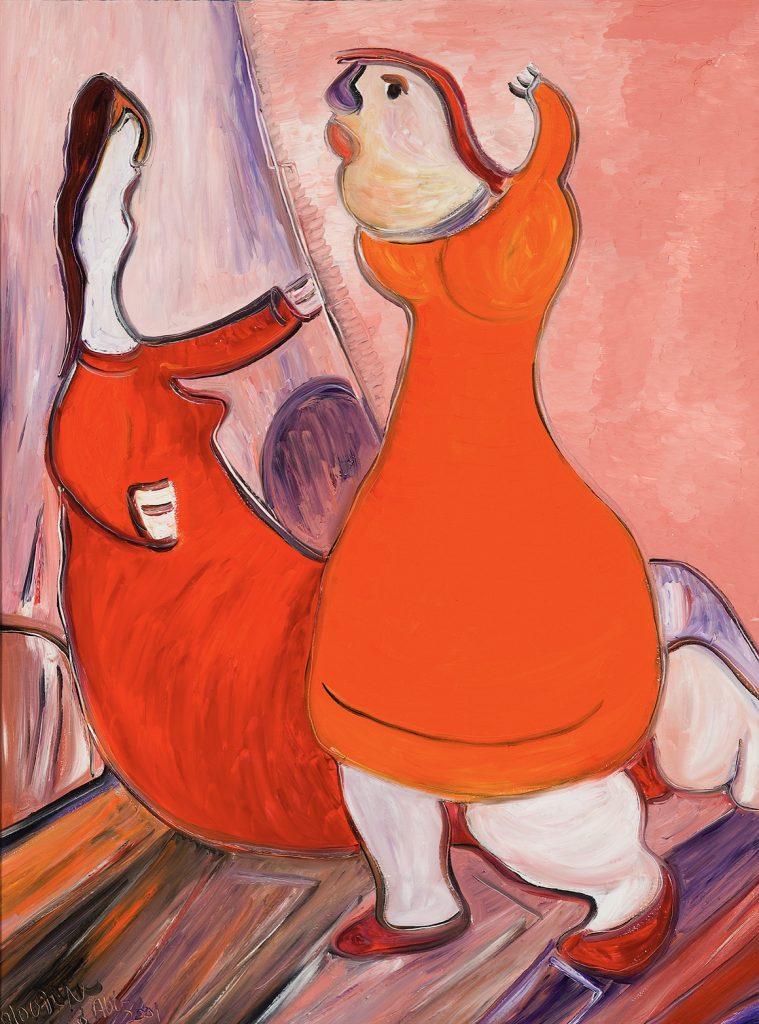ANTHONY PETULLO

An art collection usually starts innocently with one print, a watercolor or a drawing, then another, and another. At some point in the collecting, the fever strikes, buying accelerates and all is lost. It’s the point at which a casual art buyer becomes a serious art collector. Before long there is no more room on the walls, on the floor or in the closets.
And then comes the inevitable question, “Where did all this stuff come from?” Which is followed by, “I must stop buying!” It’s a resolution rarely kept, for the addicted collector can always justify the purchase of one more piece that is essential to the collection.
What drives these people to collect so much art? It’s a disease, really – it can be contracted by one person or a couple. If a couple, it does help if both parties are driven by this madness. Some critics call this condition obsessive-compulsive behavior. Art lovers are fond of calling it passion.
Most people buy art because it’s enjoyable to look at. Art frequently defines the ambiance of their homes and offices. For serious collectors, art can quickly begin to define their lives. The enjoyment factor is soon coupled with the challenge of finding more and more of their favorite art. What they set out to find is another matter.
Defining The Search
Some art treasure-hunters limit their search to a small segment of a genre or even to a single artist. Some stay within a broad category, such as modern, contemporary, photography, or Impressionism – if one has an extremely large bank account. A few are very specific, going as far as restricting their choices to one medium within a genre, such as German Expressionist fine prints.
Other collectors have more eclectic tastes, preferring to have a house full of art representing many styles. Yet a skillful connoisseur can mix dissimilar artworks and fashion them into a cohesive collection. What makes it all come together is the collector’s taste and preference. If the collector truly loves all the artwork, and has not succumbed to pressure from other people, then the collection will most likely be a fairly goof reflection of the collector’s personality.
For those preferring a specific movement or genre, there is the question of which artists to include. This is an important matter, for it is the essence of a collection. If the collection is to be an all inclusive, encyclopedic grouping of a movement, then the most important artists, at least from an art historical standpoint, should be included. If, on the other hand, the collection is to be based solely on the assembler’s personal preferences, then it doesn’t matter which artists are included.
The Collector’s Contribution

b. 1943, English
What a Surprise, 2001
Oil on canvas
The art world has five principal players: the artist, the collector, the dealer, the curator and the critic, and each can have multiple roles. Obviously, nothing happens until the artist creates something. But each of the other players has an important role. The dealer is usually the primary promoter of an artist’s work. She has readymade buyers, does advertising and public relations, and mounts exhibitions – usually not an artist’s favorite activities. The curator educates and informs us about the art, and coordinates exhibitions at museums. The critic reviews art gallery and museum exhibitions, commenting on the art and the artist.
The collector makes several contributions. Most importantly, collectors provide the money that drives the commercial art world. Artists, dealers and auction houses make a living off of these ardent art lovers. Without the art collectors, artists, dealers and auction houses would have much smaller businesses.
A collector can also be the initial advocate for an artist. This is especially true in the self-taught and outsider genre where avid collectors have sought out and promoted artists even before dealers entered the cycle. Interestingly, many collectors of self-taught and outsider art have been well-known trained artists ( Dubuffet, Picasso, Klee, the Chicago Imagists). Regardless of who discovers the artist, a prominent collector purchasing a piece of art can do wonders for an artist’s career.
In addition to keeping the art world afloat, collectors are the primary art donors to museums. Without these benefactors, art museums would have very small collections indeed. In fact, there would be far fewer art museums. Art institutions simply cannot afford to buy what collectors can donate. The next time you visit an art museum notice the little wall plaques next to the artwork. There you will see the name of the artist, a description of the work and usually the name of the donor. It’s not unusual for an art museum to receive dozens or even hundreds of gifted artworks from a single donor.
Many important art collections are destined for one or more art museums. A few collections will go to auctions but, as they say in the trade, often it’s because of one of the three Ds – death, divorce or debt. Furthermore, large art collections rarely survive the first generation. In most cases, children do not have the same parental love for the artwork or a place to display and store the art or the money to maintain it. So museums are the lucky beneficiaries.
But why do art lovers give their treasures to museums? It’s because they want to share the joy of the art with a greater audience. It’s kind of an adult game of ‘show and tell’. The collector finally gets to show off all his hard work. Now, everyone gets to enjoy it.